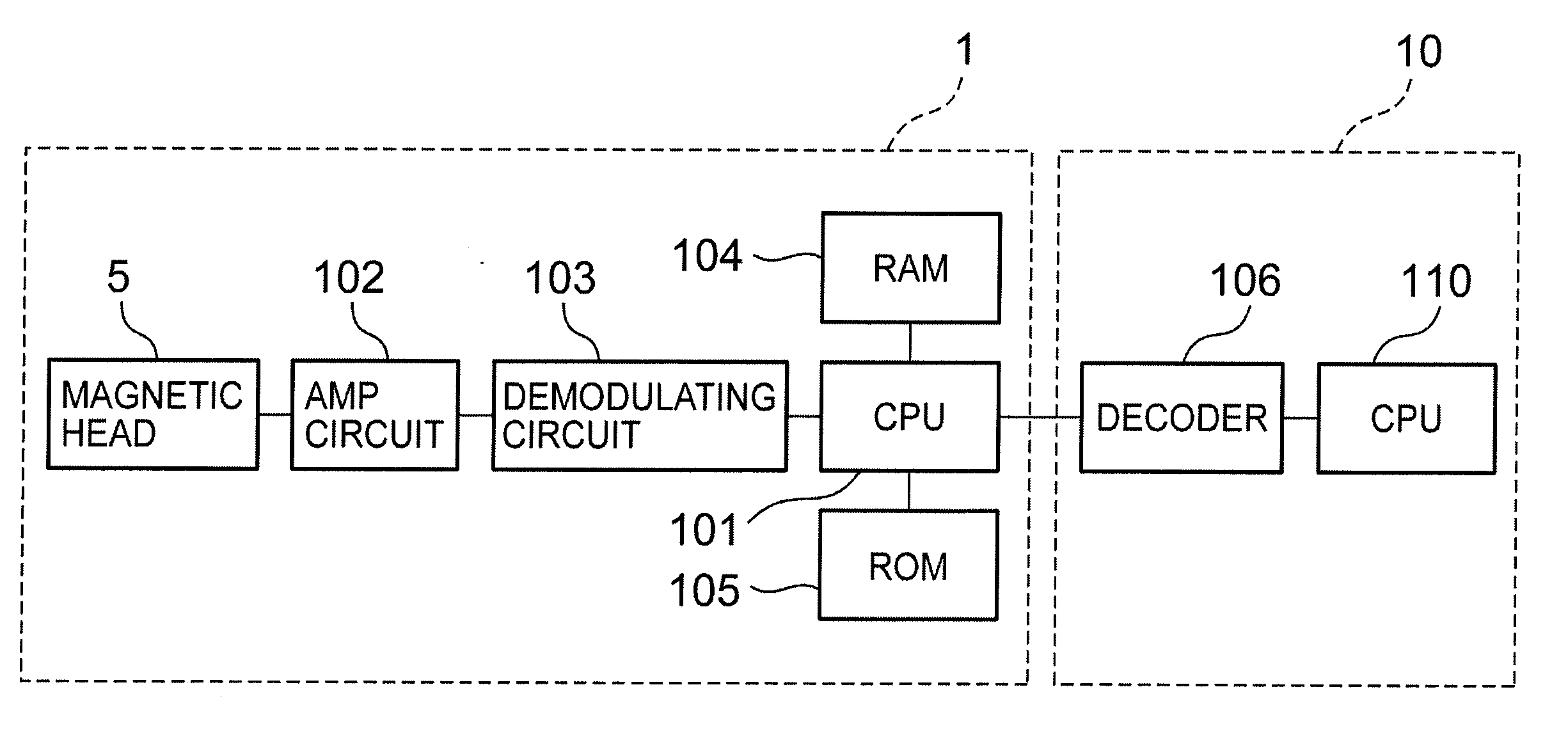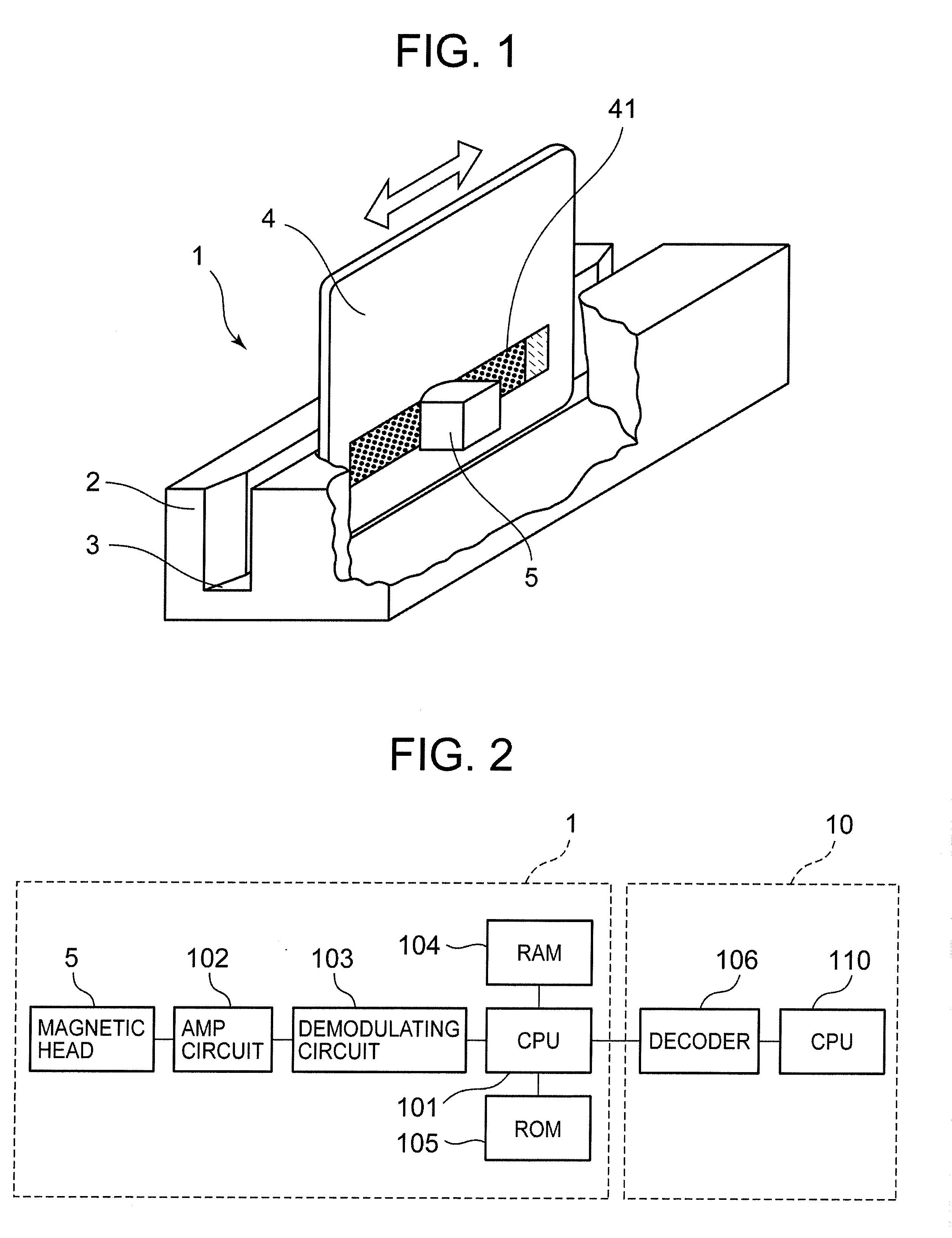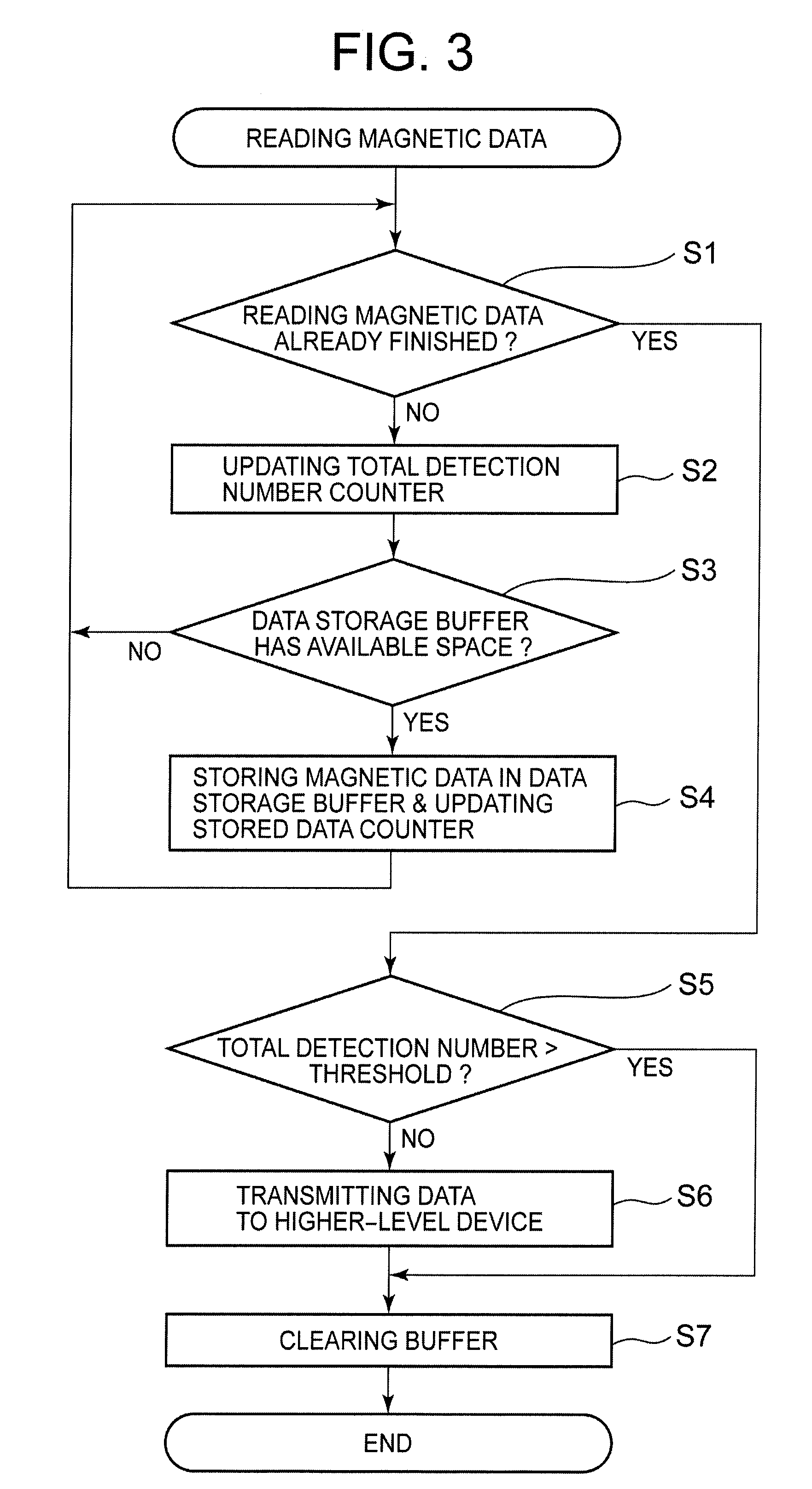Magnetic card reader and magnetic data read method
a magnetic data and card reader technology, applied in the field of magnetic card readers and magnetic data read methods, can solve the problems of insufficient size (capacity) of a buffer for storing magnetic data, unstable factor including mechanical vibration generated, and environmental resistance, so as to improve user operability, improve operation stability, and reduce the number of error handling operations in the higher-level device
- Summary
- Abstract
- Description
- Claims
- Application Information
AI Technical Summary
Benefits of technology
Problems solved by technology
Method used
Image
Examples
first embodiment
[0072]The first embodiment is described below.
[0073]In the magnetic card reader 1 according to the first embodiment, electrical components, such as the CPU 101, the RAM 104, and the ROM 105, constitute a ‘first comparing section’ and a ‘first judgment section’. More specifically to describe, the ROM 105 stores a first comparing program for comparing the total number of data in the magnetic data read and acquired by using the magnetic head 5 with a prescribed first threshold, as well as a first judgment program for judging that the magnetic data is effective data when the total number of data in the magnetic data is less than or equal to the prescribed first threshold. Then, using the RAM 104 as a working area, the CPU 101 materializes the functions of the ‘first comparing section’ and the ‘first judgment section’ through executing these programs. Incidentally, in the first embodiment, the prescribed first threshold is stored in the RAM 104, but the first threshold may as well be sto...
second embodiment
[0097]In the second embodiment, ineffective magnetic data caused by a disturbance such as a noise and the like is eliminated as much as possible to improve operation stability at the time of reading the magnetic data, and also to improve the user operability. Specifically to describe, in a magnetic card reader 1 for reading magnetic data recorded in a card 4 by using a magnetic head 5, the magnetic card reader 1 includes: a comparing section for comparing the number of data in the magnetic data read by using the magnetic head 5 with a prescribed threshold, and a judgment section for judging that the magnetic data is ineffective if the number of data is less than or equal to the prescribed threshold at the comparing section. The second embodiment is described below.
[0098]In the magnetic card reader 1 according to the second embodiment, electrical components, such as the CPU 101, the RAM 104, and the ROM 105, constitute a ‘second comparing section’ and a ‘second judgment section’. Mor...
PUM
 Login to View More
Login to View More Abstract
Description
Claims
Application Information
 Login to View More
Login to View More - R&D
- Intellectual Property
- Life Sciences
- Materials
- Tech Scout
- Unparalleled Data Quality
- Higher Quality Content
- 60% Fewer Hallucinations
Browse by: Latest US Patents, China's latest patents, Technical Efficacy Thesaurus, Application Domain, Technology Topic, Popular Technical Reports.
© 2025 PatSnap. All rights reserved.Legal|Privacy policy|Modern Slavery Act Transparency Statement|Sitemap|About US| Contact US: help@patsnap.com



